First tackle the brown, then handle the green
Today's post will not be pretty. You won't see beautiful images of spring, young greens under a dusting of snow, colorful blooms announcing the end of winter. None of that. Today you'll see some of the cleanup that's required when you have a garden that goes dormant for several months of the year. It won't be very attractive, so I'll start off with a relatively nice image:
Coincidentally it goes well with the title of today's post, as this copper trellis started out brown (ok, coppery brown), then weathered to "green". This post is not about the trellis though. It's about the stuff on the trellis, and in my planting beds: the remains of last year's plants.
My philosophy in the garden is to leave pretty much every herbaceous plant alone in the fall, letting their brown and dry remnants provide the garden's landscape during the cold months. I then do the bulk of the cleanup in the late winter and early spring.
It means that things can get pretty ugly once March rolls around. Take for example this large raised bed. It's a mess of stems, leaves, and weeds. There are also some plants emerging here, so there are some patches of green punctuating the drabness. My strategy here is the same in all of my beds: first take care of the browns, then address the greens.
So I ignore anything with color, and just start pulling, snapping, cutting, and breaking anything that's no longer alive. Some care must be taken not to step on any of the soon-to-be-emerging plants, but otherwise this is a pretty careless activity. I'm also careful not to uproot any plants when removing the old stems, so I'll typically snap them off near the base, not concerned if I leave a few inches of stem attached to the plant's crown.
After not too much effort, I've cleared the browns as well as I want to. I don't strive for perfection in cleanup, knowing that soon the greenery will cover up any straggling stems or leaves. I'd rather spend my time doing more interesting things in the garden, like planting or staring at bamboo. Cleanup is not something I linger over.
Now we can see what sort of greens are here, and which of them gets to stay. This columbine stays:
The dandelion goes:
So does the vinca, which sends a few sneaky tendrils up into this box every year.
 |
| I'm so upset about seeing this that I couldn't even focus correctly. |
These shasta daisies I'm not sure about. I'm really debating removing them this year and replacing them with white coneflowers, which I like much more than daisies. For now I'll leave them though.
This Lysimachia nummularia or "Creeping Jenny" can stay, although it may be giving the plumbago some competition in another year or two. As aggressive as this plant is, I really like it as a groundcover.
The violets though, they have to go:
I was certain that I removed all of the violets last spring, but this one is so huge it surely has been here for more than a year:
That's either an award-winning flowering specimen worthy of praise, or a glaring example of my weeding incompetence. Possibly both.
This bed contains my oldest heuchera, a common but beautiful cultivar called 'Palace Purple', or 'Purple Palace' -- I've seen it both ways:
The problem with old heuchera plants is they sort of work their way out of the ground, with the strongest parts of the plant on the ends of long woody "stems":
I never know what to do about this, so I always do nothing. This year I'm going to try something though. I'm going to dump some soil over the woody stems and see if the "arms" of the plant root:
I don't know if this was a good idea or not -- it may end up killing the plant. If it does I won't be too upset, as I have several more of these growing, some of them from seed, and some of those seedlings in non-ideal spots such as the cracks between my patio flagstones. I'm guessing one of the reasons this variety is so common is that it comes true from seed, and reseeds quite easily. Anyway, if this re-burying works, great. If it doesn't, no big deal.
Since this seems to be the year of swift and decisive actions in my garden (at least so far), I'm going to do something about this ugly little fence that encircles the bed:
What I choose to do with it is remove it. It's all bent up, does nothing to deter any animals from jumping up here, and only gets in my way. Imagine catching your foot on this as you step down out of the raised bed, feeling your balance leaving you, hoping it's not the thorny rose bush you're falling toward. I don't need to imagine that, as I've lived it.
So the fence goes.
Since the soil level in this bed has been falling every year, I also decided to mound up some new garden mix (60% compost, 40% topsoil) in the middle:
That's where I'll be planting a castor bean again, so there are no perennials that I'm covering with the 8" of fresh soil. Well, some of the daisies got buried, but I've already mentioned that I don't really care about them too much.
The bed next to this box gets cleaned up next:
The same philosophy gets applied here: remove all of the browns, then see what greens are underneath and deal with any that need to be dealt with. The usual suspects are here: vinca, violets, and lots of grassy weeds. No more photos of weeds in this post though, because I'm moving on...
... to the south side of the house. It's not so much weeds that are the problem here, but the globe thistle. I love this plant as much as the bumble bees do, but it reseeds like crazy. Or should I say I let it reseed like crazy. That's not the best strategy for a plant that's got a big taproot and is hard to remove. So now I have lots of these plants. More than I want really.
There are really only three things worth pointing out in this area of the garden right now. The first is the trellis, which you've already seen:
I love the patina on it, don't you? It looks as though it's been here for decades, but it had this look the day I built it. I should do a post someday on how I built this trellis and achieved this look in minutes.
The second mentionable over here is the rosemary:
Completely and totally dead, which is always disappointing. What's not disappointing though is the way even this crispy brown foliage smells. Simply delightful. I love the smell of rosemary -- it's one of the most refreshing, invigorating scents to me. I think I'll grow several more plants this year, even if I can't overwinter them successfully.
The last item of interest during this cleanup outing is this:
The cardoon in the bottomless container that I packed with leaves, hoping to provide enough winter protection to get it to overwinter. Helping it to its second year of life is the only way I can see those fabulous flowers it produces.
So let's take a look and see if my efforts paid off. Removing all of the leaves and we see...
Well, I'm no botanist, but I'm pretty sure that's the look of a plant that's not coming back this year. It looks quite rotten, soft, and slimy to me. Oh well, no cardoon flowers this year. I may plant another cardoon here this year, or maybe I'll put a different large-leaved plant here instead... I don't know yet.
That's another reason I like removing the browns in the spring instead of the fall. I see the "blank slate" and get excited about what I can plant here in just a month or so.
If you're not going to get excited about your efforts in the garden -- even when just cleaning up -- why garden, right?
.
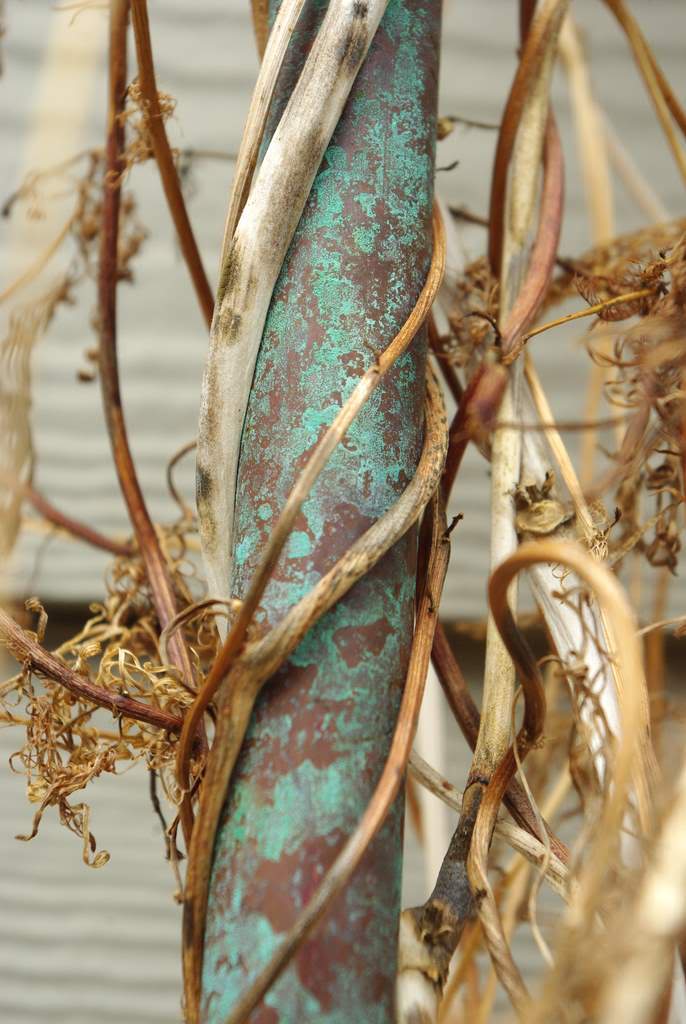
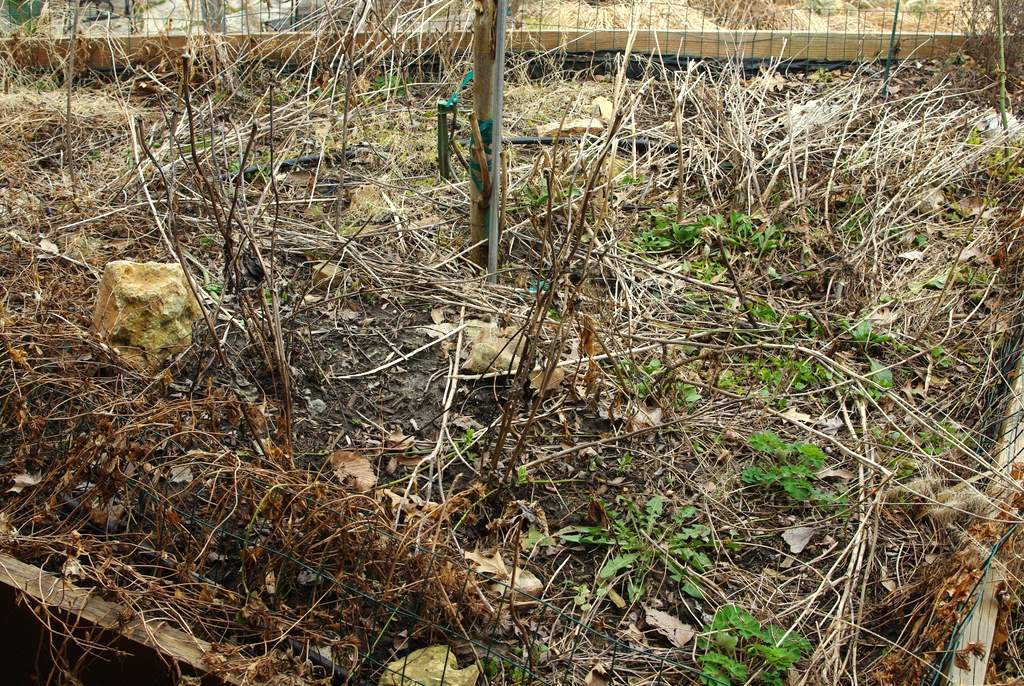

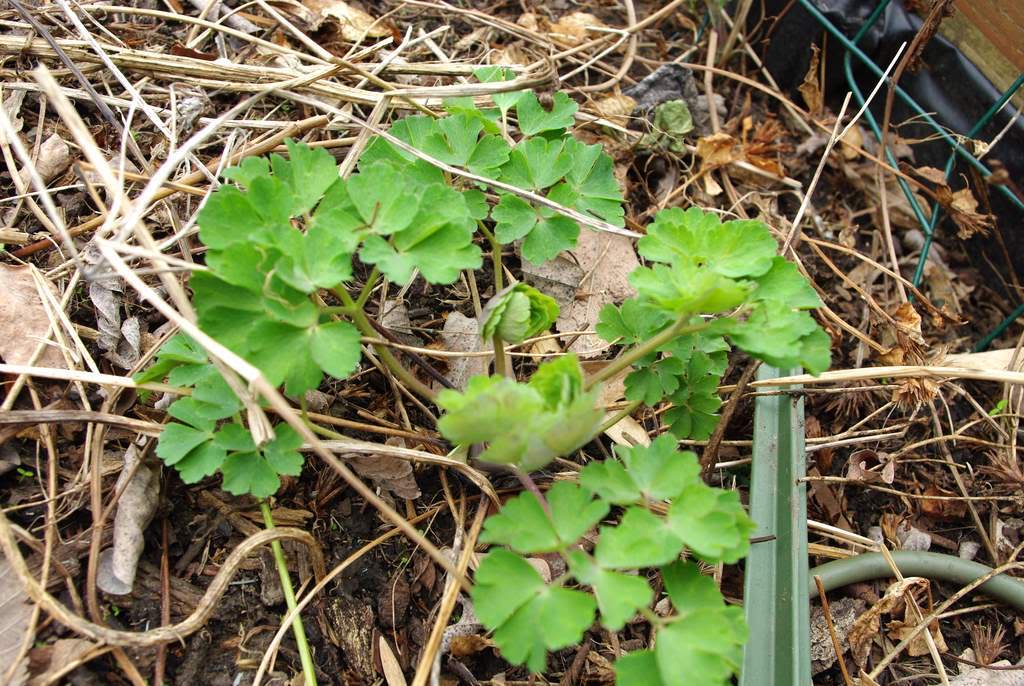
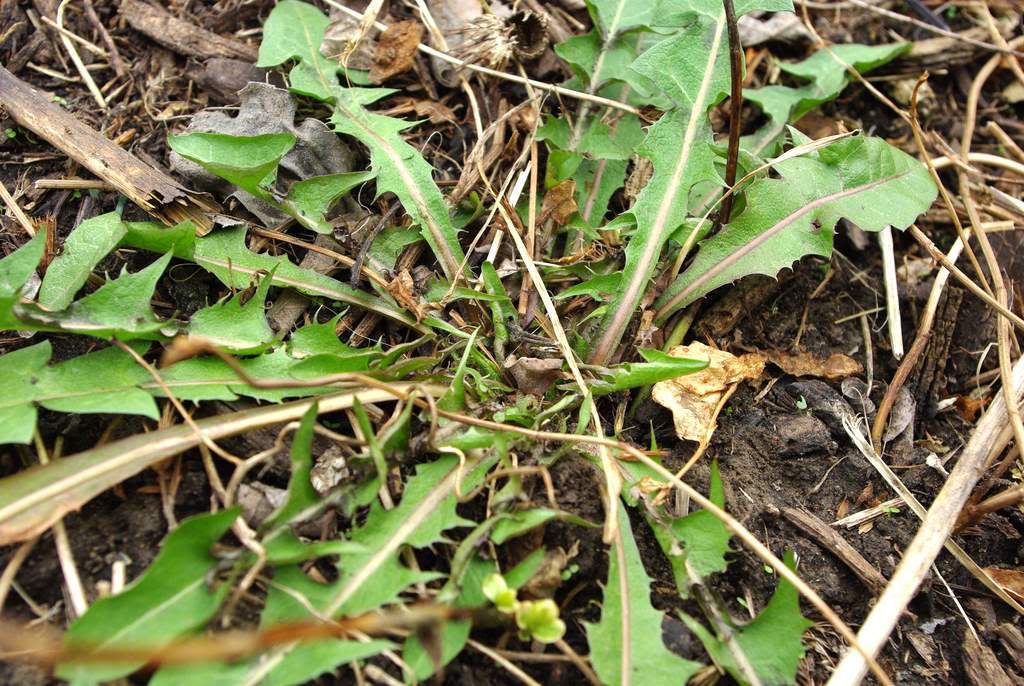
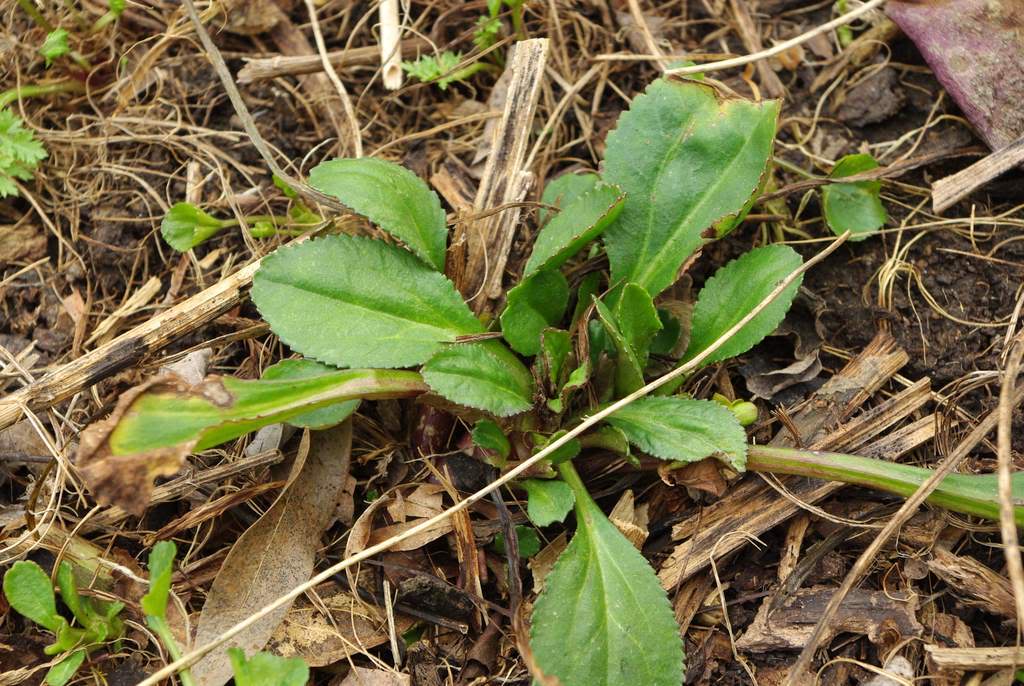

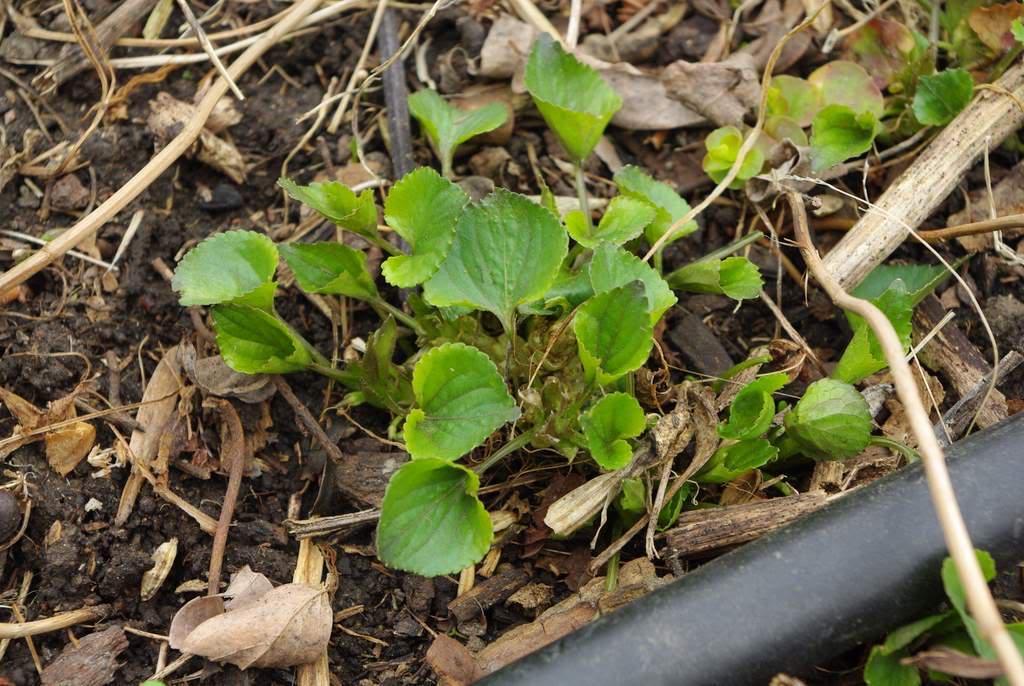
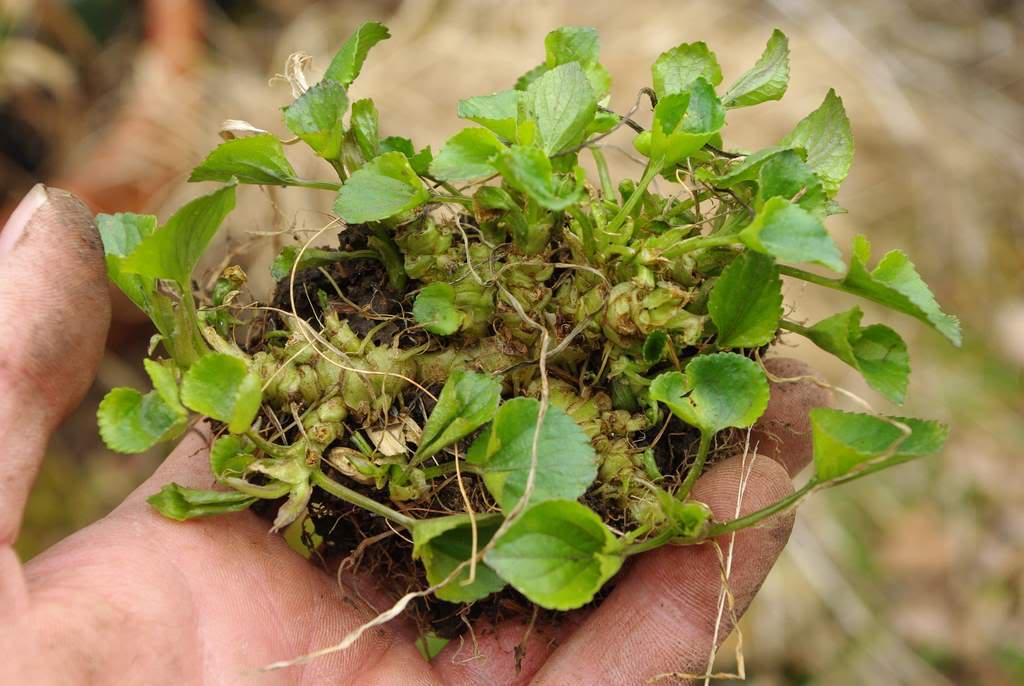
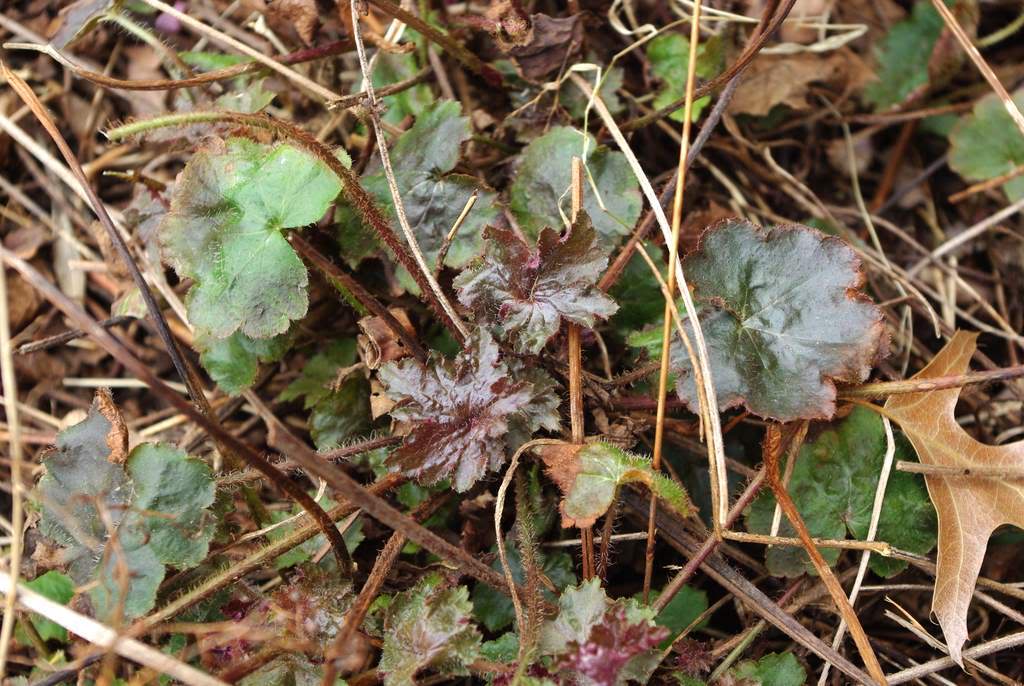
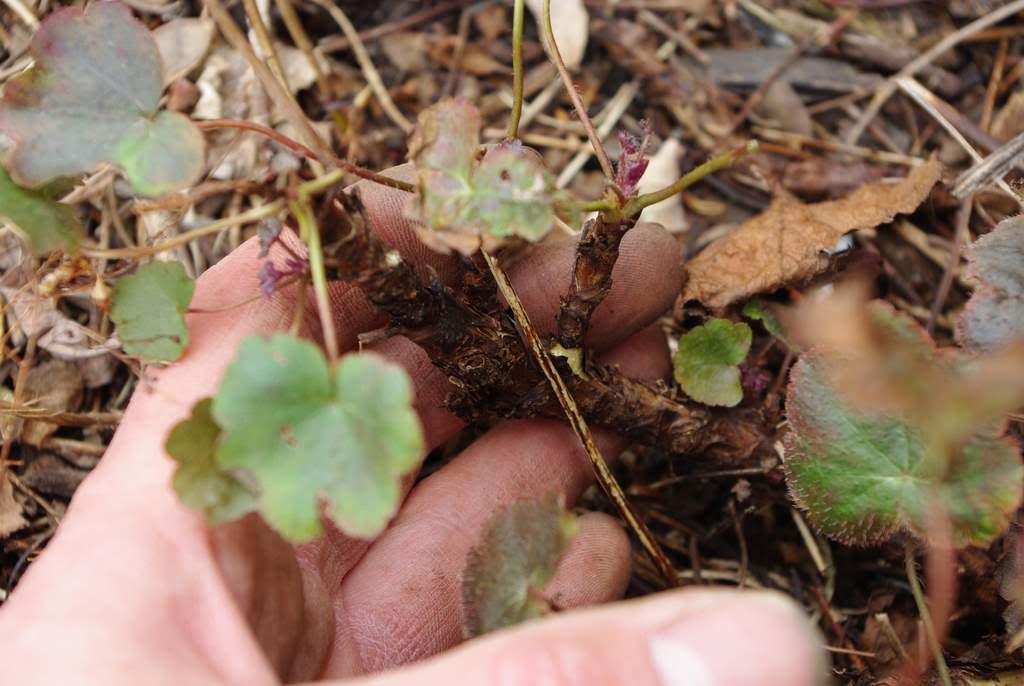
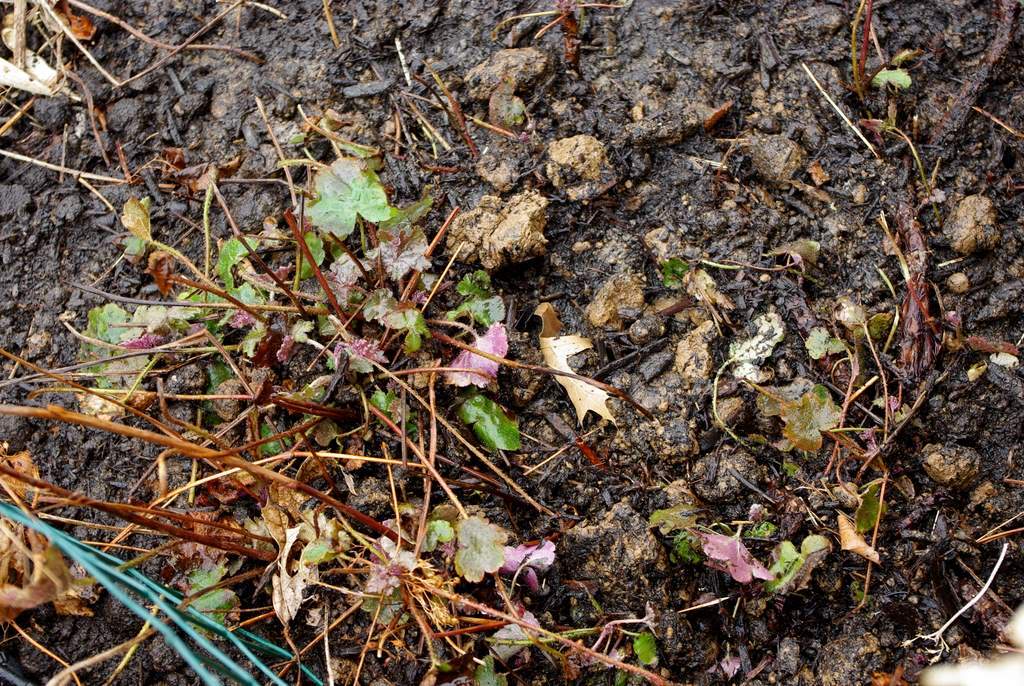

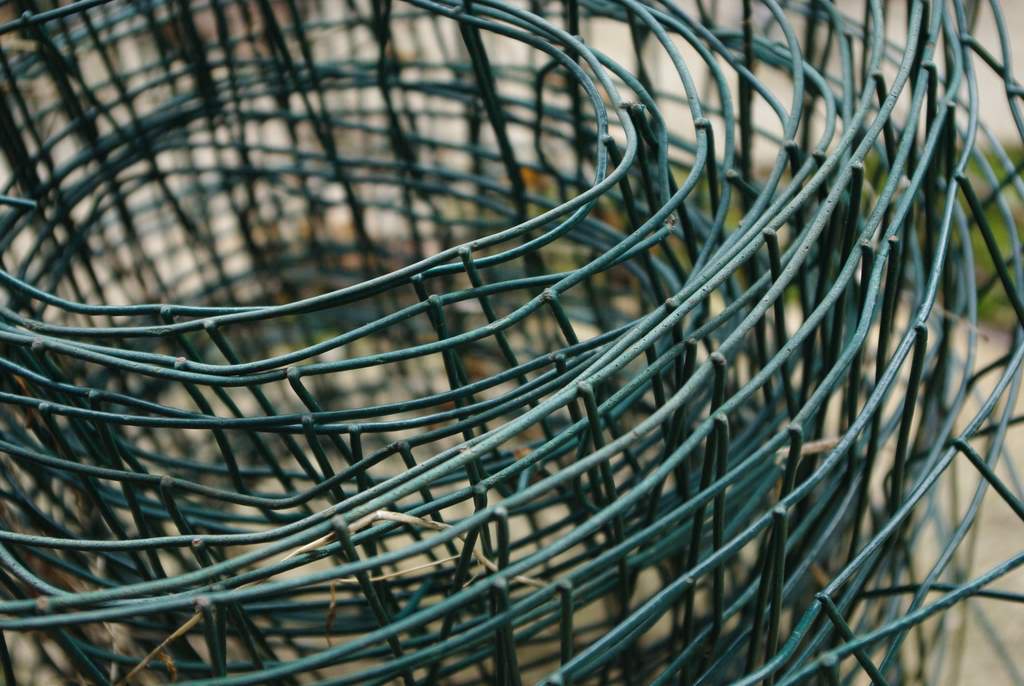
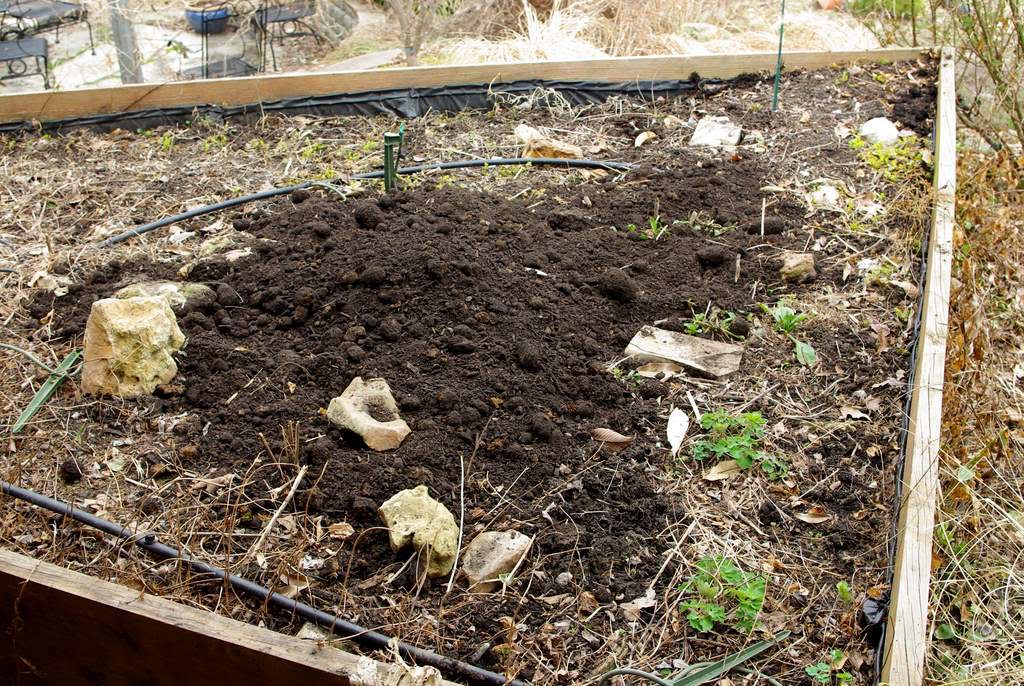
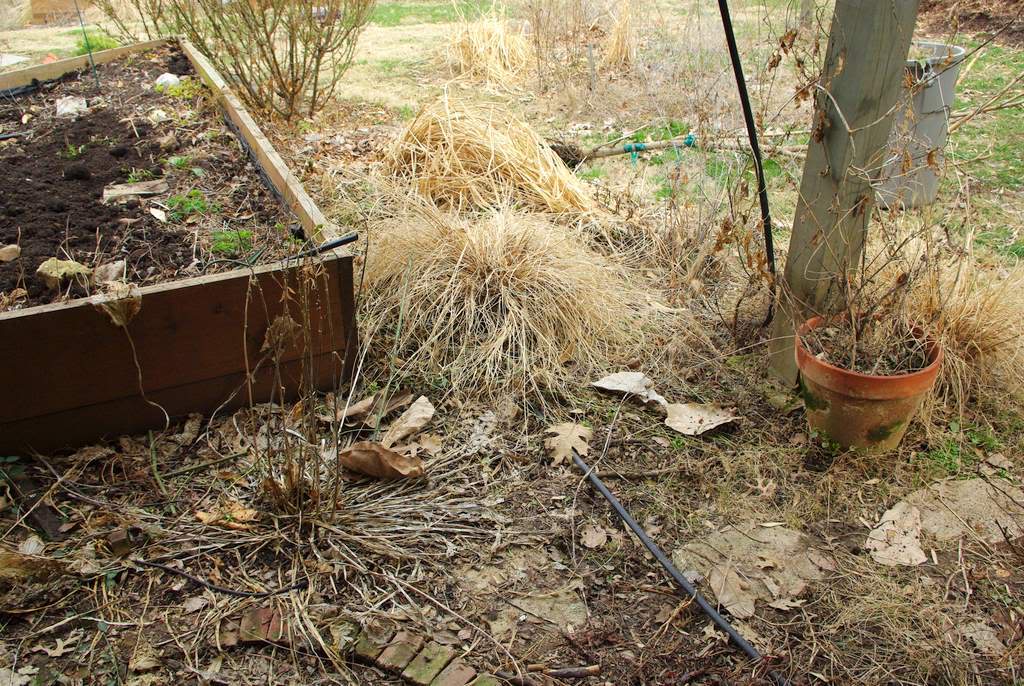

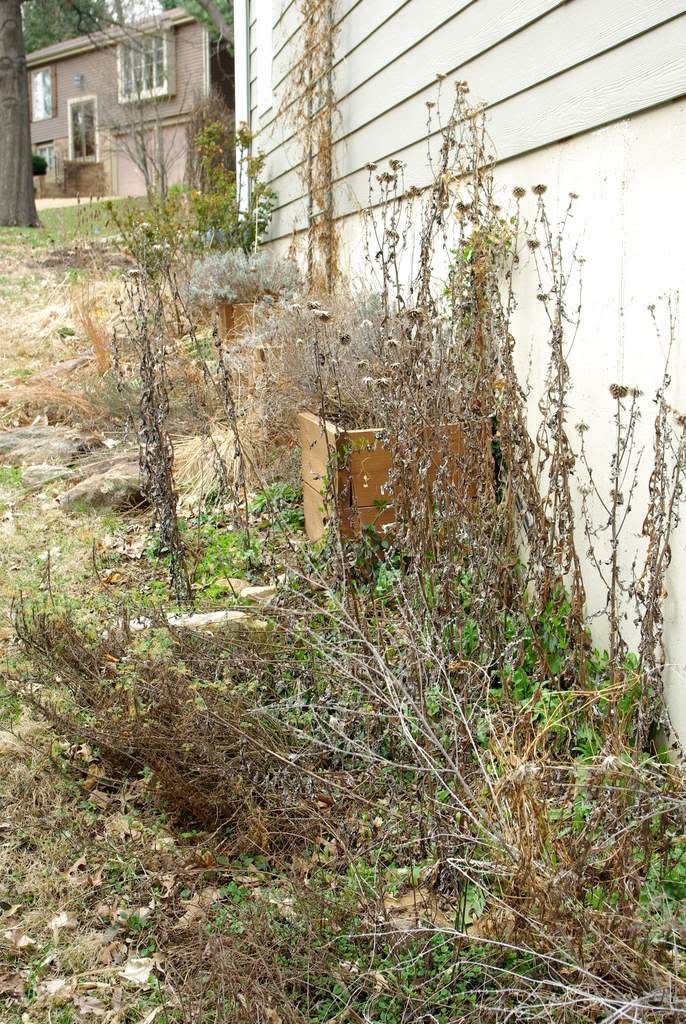

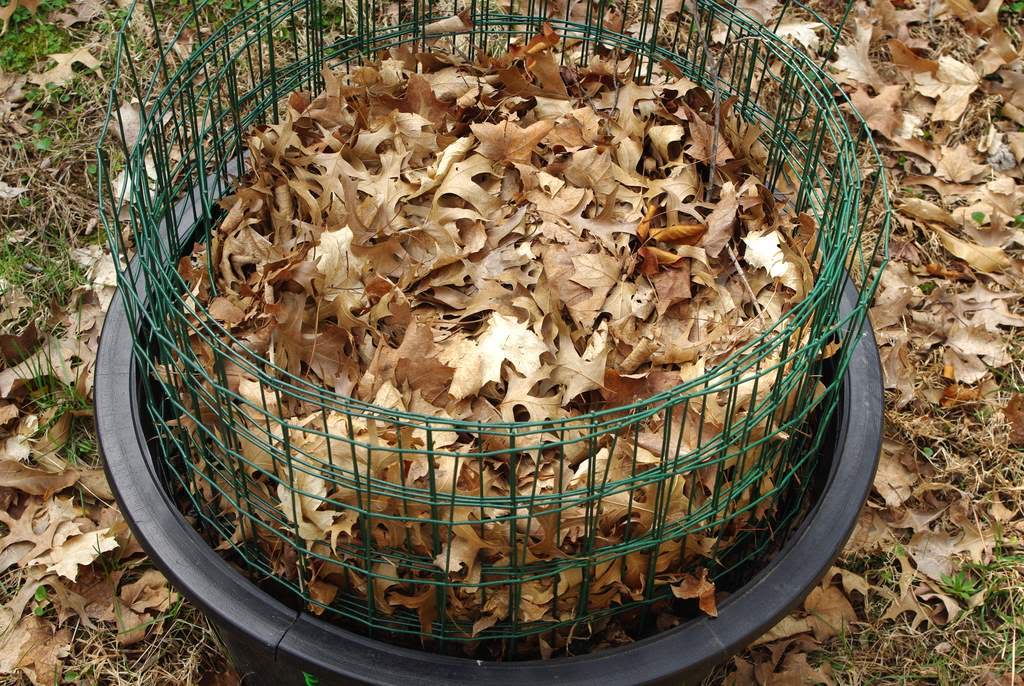
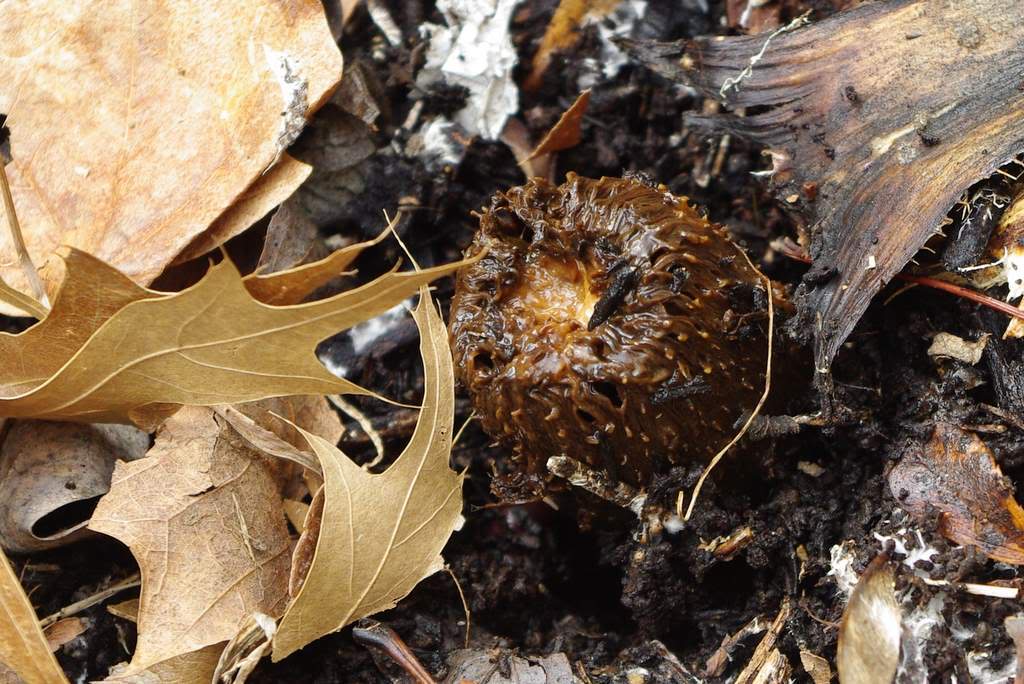
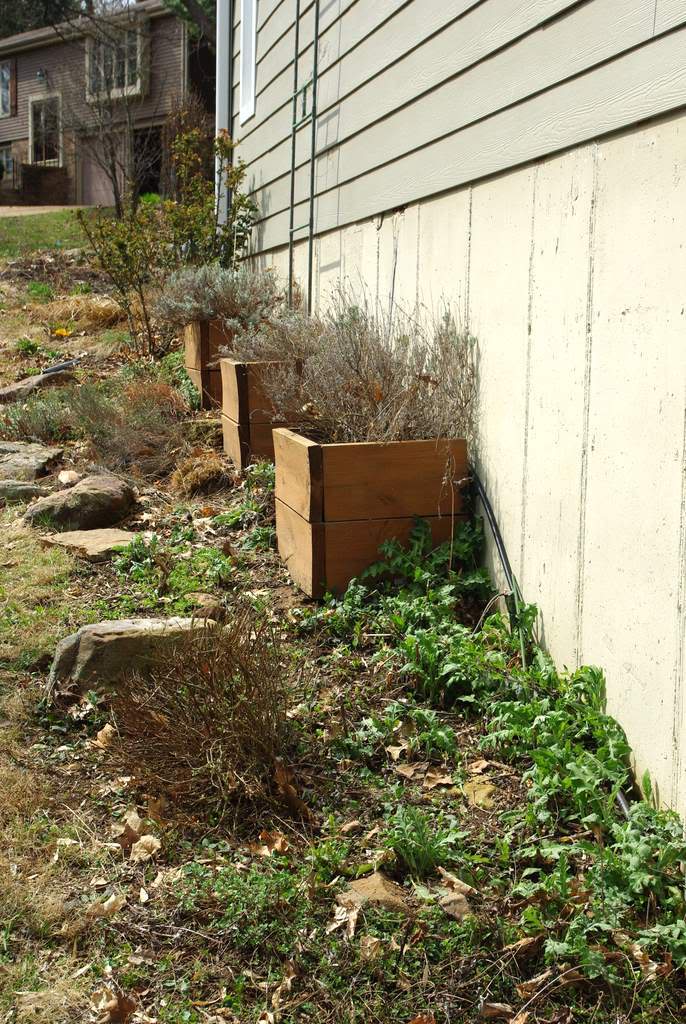




In reply to your question about the rose. It is an antique, very fragrant, repeat bloomer although I have found it blooms only sporadically after the main bloom. Can become large but I am pretty hopeless at training. I have one in a pot, which I grew from a cutting, the original one on a 6' south facing wall and that one which grew from a root. I never give the latter anything at all- no water nor fertilizer. It is a very pretty cerise color. My husband is always going out for a whiff.
Excellent post. Most bloggers (myself included) don't focus enough on clean-up but it is a vital part of gardening.
Sorry about your cardoon. It's such a beautiful plant. I've never had success growing it--although it should do well around here, considering that a lot of people grow artichokes.
Gerhard
:: Bamboo and More ::
I do the same thing, leave all the plants intact over winter but what a mess it looks in spring. Nice to see how quickly your clean up went though and everything looks so tidy now.
Yes please, to the post about achieving that patina on the copper!
I find my heucheras get very long and woody but they also self seed which means new plants for us and for the plant sale at the open garden day.
The dandelions manage to grow through clumps of plants such as agapanthus and iris chrysographes. It's so difficult to get the whole root out.
I don't envy you all the clean up work, but what to plant all new things soon! I'm fast running out of space in my garden :)
I've been cleaning my yard for the past few weeks and what amazes me every year is how it all looks now and what it will look like in a few months.
I discovered something else with my heucheras the other day - I noticed that both my Caramel and Citronelle, which are good-sized plants, have "babies" which are actually a good size too surrounding the original plant. I was very excited to see offshoots so now I can plant them in other places. I will check to see if these offshoots are from seed or maybe runners?
Heh, heh, I love it! Waking the garden up in the spring is one of my favorite parts of gardening - even if it isn't that pretty. Finding green bits and clearing out all the guck is just so satisfying.